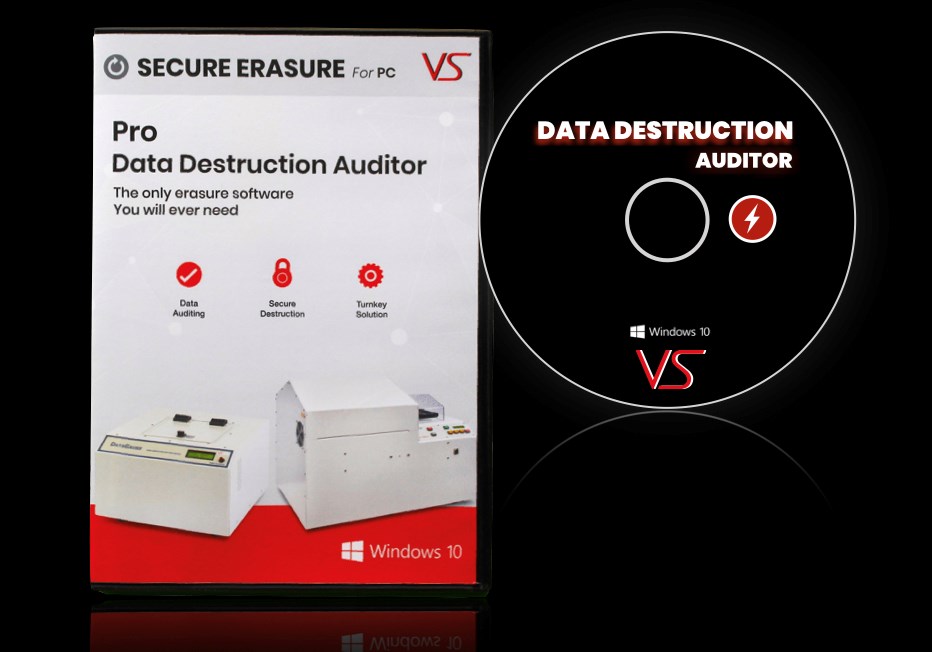The Important Nature of Data Damage in Upholding Computer System Protection Providers and Protecting Versus Unauthorized Access
In an era where data breaches and identification burglary are significantly widespread, the significance of effective information devastation can not be overemphasized. Organizations has to acknowledge that the failing to correctly take care of delicate details presents not only lawful and economic dangers but also a prospective disintegration of customer count on. Various methods, from information cleaning to physical destruction, act as critical safeguards versus unapproved access. Nonetheless, recognizing the effects of data devastation practices and conformity with policies elevates crucial concerns regarding the competence of current strategies and their lasting feasibility when faced with evolving hazards.
Significance of Data Damage
In a significantly digital globe, the relevance of information damage can not be overstated. As companies collect huge amounts of sensitive information, the prospective effects of stopping working to correctly dispose and manage of that information end up being progressively extreme. Data breaches, identity theft, and company reconnaissance posture significant risks, emphasizing the need of efficient data damage practices.

Furthermore, as technology progresses, so as well do the methods through which destructive stars look for to manipulate sensitive details. Organizations needs to continue to be positive and cautious in their data devastation methods to protect versus these evolving dangers. By prioritizing data destruction, business not just shield their properties however also foster depend on among stakeholders and customers, demonstrating a dedication to accountable information management and protection methods.
Techniques of Effective Information Destruction
To ensure the complete and irreparable damage of sensitive data, organizations can employ a range of efficient approaches tailored to their details requirements. Among one of the most common approaches is information cleaning, which involves making use of specialized software program to overwrite existing information multiple times, making healing practically difficult. This is especially useful for disk drives and solid-state drives, where traditional deletion techniques are inadequate.
An additional reliable technique is degaussing, which makes use of solid electromagnetic fields to disrupt the magnetic domain names on storage media, providing the information irretrievable. This approach is specifically matched for magnetic storage space tools, such as disk drive and difficult disks.
Physical damage is also a practical alternative, including the shredding, crushing, or incineration of storage space devices. This approach guarantees that data can not be recouped, making it ideal for companies handling extremely delicate details.

Conformity With Information Defense Rules
Organizations must not only concentrate on reliable information destruction approaches however likewise make certain compliance with information protection regulations that govern exactly how sensitive information is taken care of and dealt with. Complying with these guidelines is crucial for keeping and securing personal data client count on. Regulations such as the General Information Security Regulation (GDPR) in the European Union and the Health And Wellness Insurance Policy Transportability and Liability Act (HIPAA) in the United States enforce stringent guidelines on information monitoring, that include needs for the safe and secure disposal of sensitive info.
To accomplish conformity, organizations need to carry out thorough data damage policies that his response straighten with these lawful structures. This includes identifying information that needs destruction, developing methods for safe methodsâEUR" such as shredding physical media or using software application that meets industry requirements for information wipingâEUR" and maintaining in-depth documents of damage activities. Routine audits must be conducted to ensure adherence to these plans and to identify any kind of possible locations for improvement.
Failing to adhere to data security laws can bring about substantial legal ramifications, consisting of large fines and damages to an organization's credibility. As a result, integrating conformity right into data damage techniques is not only a legal commitment however additionally a critical part of a durable information safety strategy.
Repercussions of Poor Data Handling
Poor information handling can bring about severe repercussions that prolong beyond prompt operational problems. Organizations may encounter significant financial losses because of data violations, which usually result in pricey removal efforts, lawful costs, and regulatory fines. These economic implications can stress sources and impede growth, eventually impacting a company's profits.
Furthermore, inadequate data handling can severely damage an organization's credibility. Consumers, companions, and stakeholders might shed rely on an entity that falls short to safeguard sensitive info, resulting in lowered customer commitment and prospective loss of business possibilities. This erosion of count on can take years to restore, if it can be recovered whatsoever.
Additionally, companies could face legal ramifications occurring from non-compliance with data protection guidelines. Such offenses might cause investigations and fines, worsening the monetary problem and further tainting the organization's image.
In the realm of cybersecurity, insufficient data monitoring techniques can produce susceptabilities that make systems extra susceptible to unapproved gain access to and cyberattacks. Eventually, these consequences highlight the important value of executing Get More Information robust data handling treatments to protect sensitive information and maintain organizational integrity.
Ideal Practices for Secure Information Disposal


Firstly, information should be classified according to its level of sensitivity. Delicate details needs more extensive disposal techniques, such as shredding physical papers and using innovative software for digital information cleaning. Using certified data damage services makes certain conformity with market laws and standards.
Second of all, companies ought to apply an information disposal plan that mandates routine audits. This plan ought to outline the procedures for data retention and damage, guaranteeing that obsolete information is disposed of without delay and firmly. Educating workers on these methods is vital to fostering a society of security awareness.
Lastly, maintaining detailed documents of disposed information boosts responsibility and gives a clear audit path. This paperwork must consist of the kind of information ruined, the technique utilized, and the day of disposal.
Final Thought
Taking on robust methods such as data wiping, degaussing, and physical destruction, alongside conformity with regulations like GDPR and HIPAA, is crucial for securing sensitive details. Neglecting correct data disposal practices can lead to serious effects, including data violations and legal repercussions.
In an age where information breaches and identification burglary are progressively prevalent, the significance of reliable information damage can not be overstated. data destruction. Information breaches, identity her explanation theft, and business reconnaissance present significant threats, emphasizing the requirement of effective data damage methods
Conformity with laws such as GDPR and HIPAA mandates that companies carry out rigorous data security measures, consisting of the safe and secure devastation of data at the end of its lifecycle.
By focusing on data destruction, firms not just secure their properties yet additionally foster trust fund amongst customers and stakeholders, demonstrating a dedication to liable data monitoring and safety techniques.
Organizations have to not just focus on efficient information devastation methods but also make sure conformity with data protection guidelines that govern exactly how delicate info is dealt with and disposed of.